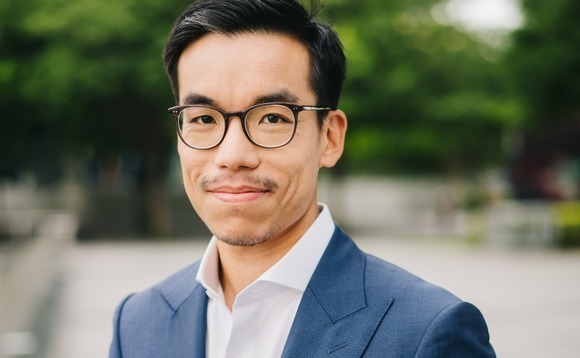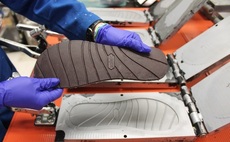
Profile: Foundation Private Equity's Jeremy Foo

Moving from direct investment to secondaries with Foundation Private Equity took Jeremy Foo outside his comfort zone, but past experiences of liquidity crunches have proved instructive
Five years ago, Jeremy Foo was making direct investments for Navis Capital Partners in Southeast Asia, regularly shuttling between Singapore and Indonesia in search of founders willing to cede control of their businesses. A career in secondaries was not on the agenda, but elements of what would come to underpin the secondaries opportunity were falling into place.
"Had you told me back then I would end up working in secondaries, I'd have thought you were joking," Foo said. "However, from my time in directs, especially with difficulty around exits, I recognised the need for liquidity. It's just that secondaries and continuation funds were not market standard at the time."
Foo's career in Asia includes stints from Standard Chartered Private Equity (SCPE) to Southern Capital to Navis. Each of these firms ended up executing GP-led secondary transactions within a few years of his departure, the culmination of multi-year efforts to return capital to LPs.
Navis was the most recent, announcing a final close of USD 900m on Fund VIII and a USD 450m continuation vehicle tied to Fund VI last August. By then, Foo had decamped to Foundation Private Equity, an Asia secondaries firm he established with Jason Sambanju, formerly of Paul Capital and Deutsche Bank.
AVCJ reported last year that Foundation reached a USD 110m first close on its debut fund against an overall target of USD 250m. Foo declined to comment on fundraising.
The firm has completed four investments to date, buoyed by GPs in the region exploring secondary solutions in ever greater numbers. Foundation started out taking deep dives into no more than a couple of opportunities a month. Since the end of last year, that has risen to as many as three a week. More than half of the firm's overall deal flow comes from inbound inquiries.
Into alternatives
Foo's path into the asset class was not unusual. Born in Singapore, he studied finance at university in the US and harboured ambitions to enter investment banking. These switched to private equity when a summer internship with J.P. Morgan's leveraged finance group brought him face-to-face with investment professionals from Apollo Global Management pursuing a specialty chemicals acquisition.
On graduating in 2005, Foo was taken on as an analyst by Merrill Lynch's private equity group in New York, and a year later he relocated to London for a job working on buyouts at Macquarie. Before long, though, Asia came back into focus – a consequence of mounting economic uncertainty in the US and Europe and fears of missing out on opportunities back home.
"People told me not to wait 10 years before coming back because I wouldn't have a network and wouldn't be able to do deals. Half a generation before me, anyone with Wall Street experience could easily find a job in Asia. By 2007, that experience was no longer unique,'" Foo recalled. "Had I waited another 18 months, it would have been harder. A lot of people tried to return in the aftermath of the global financial crisis."
He found work with SCPE, then under the stewardship of Joe Stevens and looking to expand. Standard Chartered was one of few global banks to retain a direct private equity unit as regulatory reforms prompted other teams to spin out. These dynamics shifted markedly during Foo's five-year tenure, leading to internal chatter about restructuring and ways to move assets off balance sheet.
The SCPE team would, in turns, be told it was core to the bank's strategy and then endure hiring freezes. Meanwhile, there was increasing pressure to pitch private equity to existing bank clients as one of multiple solutions alongside the likes of debt and treasury products.
These synergies made sense in theory yet proved frustrating in practice: larger enterprises, happily serviced by the bank, didn't necessarily want to take equity; smaller businesses sourced by SCPE as potential investments were rushed into bank onboarding processes, but know-your-customer protocols were so onerous and time-consuming they never ended up becoming clients.
"When I joined, we could look for deals everywhere, but from 2011-2012 onwards, they were pushing us only to work with bank clients – to the point that if it was a non-bank client you shouldn't bother," Foo said. "Often, we couldn't proceed on deals because it was hard to justify how the bank could sell other products with them."
Captive conundrum
Foo moved to Southern Capital in 2013, pushed by uncertainty at SCPE and pulled by the prospect of pursuing mid-market buyouts. Shortly thereafter, Standard Chartered embarked on a two-year process that saw more than 40 positions worth USD 2.3bn spun out into four new limited partnerships backed by secondary investors. The SCPE team retained management responsibilities.
These transactions were unusually structured. Standard Chartered – keen to avoid selling at too deep a discount because this would mean taking a balance sheet hit – sweetened the deal by charging the incoming investors low management fees and attractively priced debt financing.
Problems arose when the team resolved to spin out and tried to agree economically viable terms with the bank, which was still paying them salaries to manage the new limited partnerships and the USD 1bn in assets still sitting on the balance sheet assets. Stevens was fired after negotiations broke down in 2016. The team, and most of the balance sheet assets, finally spun out in early 2019.
Captive spinouts account for about 20% of Foundation's deal flow, typically involving corporate VC units and family offices rather than banks. The firm is highly sensitised to situations where the team doesn't move at the same time as the assets and where listed entities don't want to sell at discounts due to the short-term hit on profitability.
"We've seen issues with listed conglomerates in India that have invested a lot in start-ups and decide they don't want to continue because it's sucking up so much cash and not delivering any profit, and then the team is getting impatient because they want to do follow-ons and new investments," said Foo.
"It's hard to get the right fit. The time pressure isn't as great as with a manager nearing the end of its fund life that needs a solution. If the pricing isn't right, corporates just go quiet for a bit."
To be continued
The bulk of the remaining 80% of what Foundation sees are opportunities from GPs that want more time to develop existing assets or need to return capital to LPs ahead of a new fundraise. Southern Capital's USD 450m stapled secondary in 2018 was one of the pioneering transactions of this type involving an Asia-headquartered private equity firm with an institutional investor base.
Foo joined shortly after Southern closed its third fund on USD 408m, having upsized the corpus to accommodate demand from LPs that, at the time, wanted more Southeast Asia exposure. The new fund was deployed swiftly, with Foo participating in transactions such as a buyout of Malaysia-based FOS Apparel and a carve-out from Singapore-listed United Engineers.
"I'd always enjoyed middle-market control deals. I found the work more fulfilling than taking small stakes in multi-billion-dollar companies where you don't get much access to management and you're lucky to get a board seat," he said. "I jumped at the opportunity with Southern."
Navis represented an opportunity to pursue this theme on a larger scale. The firm boasted the broadest geographic footprint of any Southeast Asia-based manager and its seventh fund closed on USD 1.5bn in 2015, a year before Foo joined.
Both Southern and Navis sought secondary solutions when subsequent fundraises proved difficult. On one hand, it could be argued they returned to market too quickly, with LPs wanting to see more exits from earlier funds. On the other, sentiment on Southeast Asia had turned due to a combination of macroeconomic and performance reasons (and then Navis had to contend with COVID-19).
To Foo, this says much about the inherent challenges of executing private equity in Southeast Asia: addressing disparate individual markets with distinct cultures and languages, which stymie Singapore fly in, fly out strategies; dealing with founder-entrepreneurs who are reluctant to cede control, and even when they do, often still pull the strings with a 30% stake; and undeveloped capital markets.
"The exit thesis sometimes doesn't play out because companies are hard to scale," he added. "You might have an amazing Singapore brand and the private equity firm makes introductions to the right mall owners and suppliers in Malaysia with a view to having 100 outlets nationwide. It looks great on paper, but it doesn't work out because the operating environment is so different."
Consequently, Foo was open-minded when Sambanju – a friend for over a decade – raised the prospect of teaming up at Foundation in mid-2017. He was ready for a change, and the role that secondaries could play as a liquidity solution for GPs in Asia was immediately apparent.
Direct relevance
This awareness was also beginning to filter through the private equity community. Over the years, GPs in similar positions to Southern and Navis have considered various ways of returning capital to LPs beyond the conventional, from asset-by-asset dividend recaps to borrowing against entire portfolios. It is only relatively recently that secondaries have become understood and accepted.
"When I was at Southern, no one had really heard of continuation funds," said Foo. "Now, there is a lot of interest, but you must be careful. If a GP says they could have exited an investment a year ago, you need to know why they didn't. Is it because they couldn't get a good price or because they wanted to hold on for more carry? And what makes you sure they won't do the same with a continuation fund?"
Sambanju called on Foo, as a direct investor, to help answer these questions. A significant number of the wider Foundation team have similar backgrounds with a view to conducting bottom-up due diligence on individual assets as opposed to the traditional LP secondary approach of taking a broad view on a portfolio and applying a discount to net asset value.
The transition from directs to secondaries wasn't straightforward and it drew surprised responses from some quarters. However, nearly four years on, Foo feels comfortable with the terrain and encouraged by the traction he sees in the market.
"It wasn't an easy decision, but I was at a point in my career where it was a case of go all-in with directs and try to make partner with a Southeast Asia firm or set up a secondaries firm from scratch with Jason and build it the way we wanted," he added.
"It's encouraging when new joiners say to us, ‘You weren't kidding when you said that deal flow is good.' Often, they are surprised to see certain GPs looking for solutions because these managers are well regarded in the market. But maybe they haven't exited a lot of deals."
Latest News
Asian GPs slow implementation of ESG policies - survey
Asia-based private equity firms are assigning more dedicated resources to environment, social, and governance (ESG) programmes, but policy changes have slowed in the past 12 months, in part due to concerns raised internally and by LPs, according to a...
Singapore fintech start-up LXA gets $10m seed round
New Enterprise Associates (NEA) has led a USD 10m seed round for Singapore’s LXA, a financial technology start-up launched by a former Asia senior executive at The Blackstone Group.
India's InCred announces $60m round, claims unicorn status
Indian non-bank lender InCred Financial Services said it has received INR 5bn (USD 60m) at a valuation of at least USD 1bn from unnamed investors including “a global private equity fund.”
Insight leads $50m round for Australia's Roller
Insight Partners has led a USD 50m round for Australia’s Roller, a venue management software provider specializing in family fun parks.







